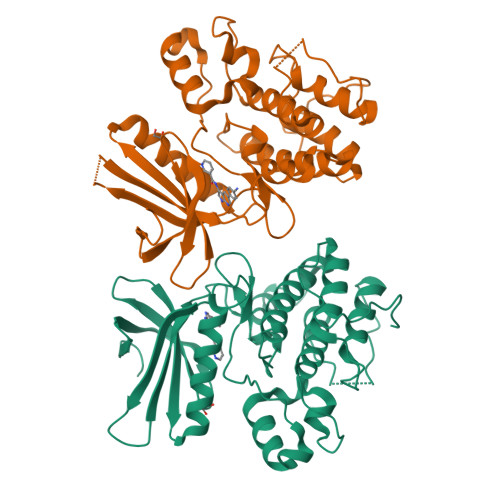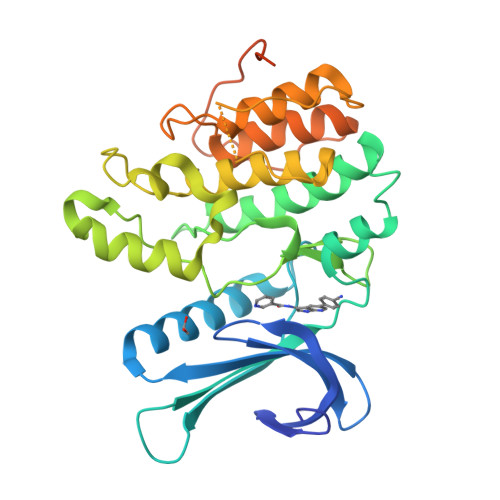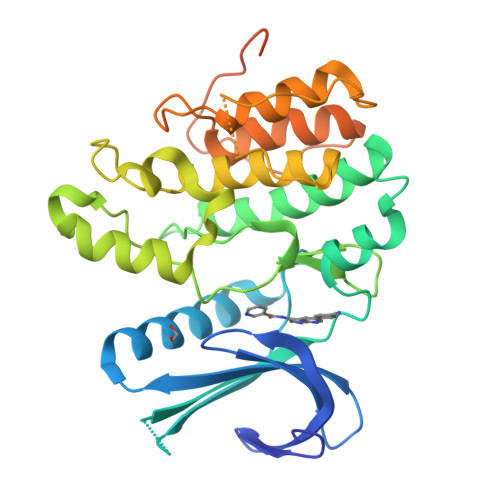Synthesis and Structure-Activity Relationships of 3,5-Disubstituted-pyrrolo[2,3- b]pyridines as Inhibitors of Adaptor-Associated Kinase 1 with Antiviral Activity.
Verdonck, S., Pu, S.Y., Sorrell, F.J., Elkins, J.M., Froeyen, M., Gao, L.J., Prugar, L.I., Dorosky, D.E., Brannan, J.M., Barouch-Bentov, R., Knapp, S., Dye, J.M., Herdewijn, P., Einav, S., De Jonghe, S.(2019) J Med Chem
- PubMed: 31136173
- DOI: https://doi.org/10.1021/acs.jmedchem.9b00136
- Primary Citation of Related Structures:
5L4Q - PubMed Abstract:
There are currently no approved drugs for the treatment of emerging viral infections, such as dengue and Ebola. Adaptor-associated kinase 1 (AAK1) is a cellular serine-threonine protein kinase that functions as a key regulator of the clathrin-associated host adaptor proteins and regulates the intracellular trafficking of multiple unrelated RNA viruses. Moreover, AAK1 is overexpressed specifically in dengue virus-infected but not bystander cells. Because AAK1 is a promising antiviral drug target, we have embarked on an optimization campaign of a previously identified 7-azaindole analogue, yielding novel pyrrolo[2,3- b]pyridines with high AAK1 affinity. The optimized compounds demonstrate improved activity against dengue virus both in vitro and in human primary dendritic cells and the unrelated Ebola virus. These findings demonstrate that targeting cellular AAK1 may represent a promising broad-spectrum antiviral strategy.
Organizational Affiliation:
Medicinal Chemistry, Rega Institute for Medical Research , KU Leuven , Herestraat 49-bus 1041 , 3000 Leuven , Belgium.





















